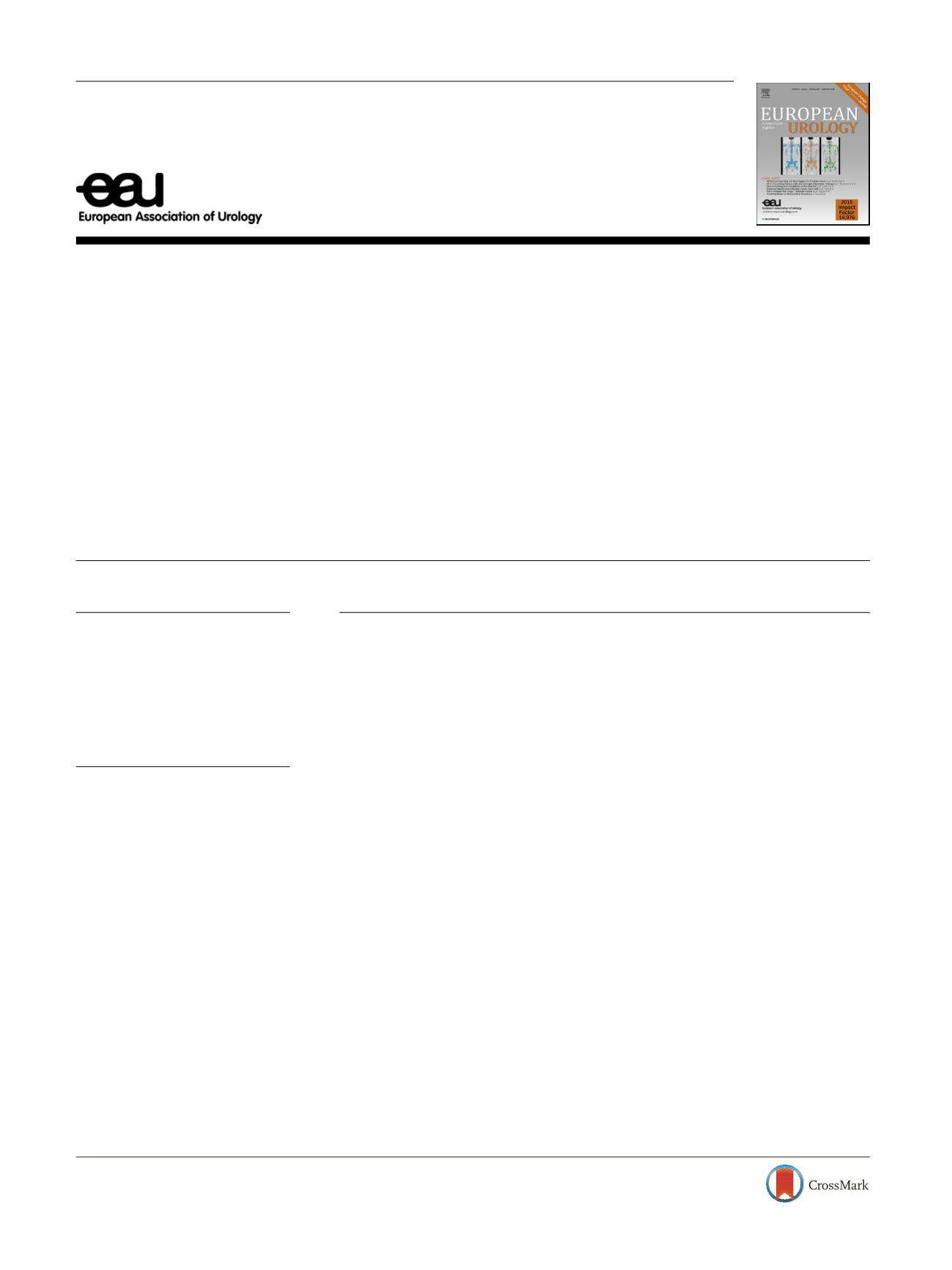

Platinum Priority – Prostate Cancer
Editorial by Bridget F. Koontz on pp. 918–919 of this issue
Impact of Postoperative Radiotherapy in Men with
Persistently Elevated Prostate-specific Antigen After Radical
Prostatectomy for Prostate Cancer: A Long-term Survival Analysis
Giorgio Gandaglia
a , b , y, Stephen A. Boorjian
c , y, William P. Parker
c ,Emanuele Zaffuto
a , b ,Nicola Fossati
a , b ,Marco Bandini
a , b ,Paolo Dell’Oglio
a , b ,Nazareno Suardi
a , b ,Francesco Montorsi
a , b ,R. Jeffrey Karnes
c ,Alberto Briganti
a , b , *a
Unit of Urology/Division of Oncology, URI, IRCCS Ospedale San Raffaele, Milan, Italy;
b
Vita-Salute San Raffaele University, Milan, Italy;
c
Department of
Urology, Mayo Clinic, Rochester, MN, USA
E U R O P E A N U R O L O G Y 7 2 ( 2 0 1 7 ) 9 1 0 – 9 1 7available at
www.scienced irect.comjournal homepage:
www.europeanurology.comArticle info
Article history:
Accepted June 1, 2017
Associate Editor:
Giacomo Novara
Statistical Editor:
Andrew Vickers
Keywords:
Radical prostatectomy
Prostate cancer
Prostate-specific antigen
persistence
Clinical recurrence
Abstract
Background:
Prostate cancer (PCa) patients with prostate-specific antigen (PSA) persis-
tence after radical prostatectomy (RP) are at increased risk of mortality, although the
natural history of these men is heterogeneous and the optimal management has not
been established.
Objective:
To develop a model to predict cancer-specific mortality (CSM) and to test the
impact of radiotherapy (RT) on survival in this setting.
Design, setting, and participants:
We identified 496 patients treated with RP and lymph
node dissection at two referral centers between 1994 and 2014 who had PSA persis-
tence, defined as a PSA level between 0.1 and 2 ng/ml at 6–8 wk after RP.
Outcome measurements and statistical analyses:
A multivariable model predicting CSM
was developed. We assessed whether the impact of postoperative PSA levels on survival
differed according to baseline CSM risk. The nonparametric curve fitting method was
then used to explore the relationship between baseline CSM risk and 10-yr CSM rates
according to postoperative RT.
Results and limitations:
Median follow-up for survivors was 110mo. Overall, 49 patients
experienced CSM. The 10-yr CSM-free survival was 88%. Pathologic grade group and
pathologic stage were independent predictors of CSM (all
p
= 0.01). The association
between CSM-free survival and PSA at 6–8 wk differed by the baseline CSM risk, whereby
the effect of increasing PSA was evident only in patients with a CSM risk of 10%.
Postoperative RT was beneficial when the predicted risk of CSM was 30% (
p
= 0.001 by
an interaction test). Our study is limited by its retrospective design.
Conclusions:
Increasing PSA levels should be considered as predictors of mortality
exclusively in men with worse pathologic characteristics. Postoperative RT in this setting
was associated with a survival benefit in patients with a CSM risk of 30%. Conversely,
individuals with a CSM risk of
<
30% should be initially managed expectantly.
Patient summary:
Not all patients with prostate-specific antigen persistence have a
poor prognosis. Pathologic characteristics should be used to estimate the risk of cancer-
specific mortality in these individuals and to identify patients who could benefit from
postoperative radiotherapy.
#
2017 European Association of Urology. Published by Elsevier B.V. All rights reserved.
y
Both authors contributed equally.
* Corresponding author. Unit of Urology/Division of Oncology, URI, IRCCS Ospedale San Raffaele,
Milan, Italy. Tel. +39 0226437286; Fax: +39 0226437286.
E-mail address:
briganti.alberto@hsr.it(A. Briganti).
http://dx.doi.org/10.1016/j.eururo.2017.06.0010302-2838/
#
2017 European Association of Urology. Published by Elsevier B.V. All rights reserved.
















